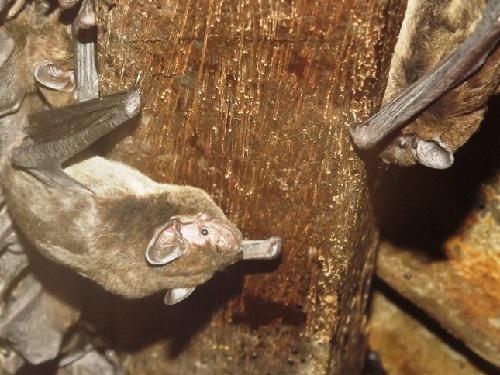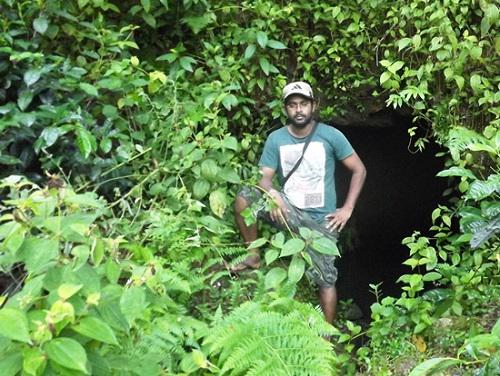Tharaka Kusuminda
Identify species of bats which could effectively act as biological control agents of insect pests in Tea plantations in Sri Lanka by analysing their diet composition and highlight their important among Tea planters for secure their conservation.

Pipistrellus ceylonicus at Maskeliya site.
Tea is one of major plantation crop and earn highest export income from plantation sector in Sri Lanka. To attain high leaf production while controlling insect pest attacks, Tea planters apply considerable amount of insecticides on tea plants. This wanton use of pesticides is harmful to consumers, workers, natural enemies of tea pest and whole environment by accumulation of undesirable residues on made tea, resurgence of primary pests, secondary pest outbreak, resistance development, kill natural enemies and pollute whole environment including natural water bodies. Due to this bad effects, most of agro-ecosystems moving to integrated pest management with promoting natural enemies. Insectivorous bats are the effective predators of nocturnal insects in many agro-ecosystems and it was proved by many researchers in many parts of the world. There are 26 insectivorous bats in Sri Lanka. However there are no any scientific information available on pest control service of bats in Tea plantations of Sri Lanka as well as in the world. By determining their service, easy to implement conservation programs among Tea plantations by educating tea planters and installing artificial bat roosting sites.

Entrance of bat roosting site at Kanneliya.
I will sample six tea plantations at Nuwara Eliya, Kandy, Udapussellawa, Badulla, Deniyaya and Dimbula for represent all tea growing regions in Sri Lanka. All sites will be sampled for one year period to cover all seasonal pest activities. Capturing of bats within the tea plantations will be done using Triple High Forest Filter Mist Net Set and G7 Forest Strainer Harp Trap (most effective trapping gears for bats). All captured bats will be immediately weighed and key morphometric measurements will be taken. Faecal pellets obtained from bats will be stored in a small sample tube containing 70% ethanol. During analysis each pellet will be teased apart under a dissection microscope until individual identifiable items may be seen and then identified by comparison with a reference collection of key insect pests in tea lands.